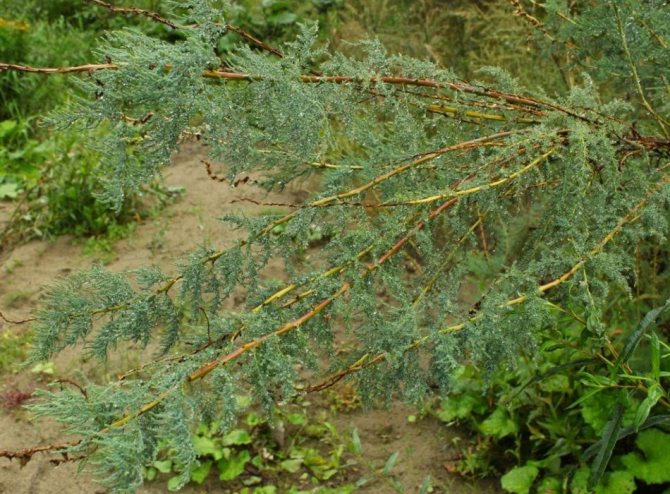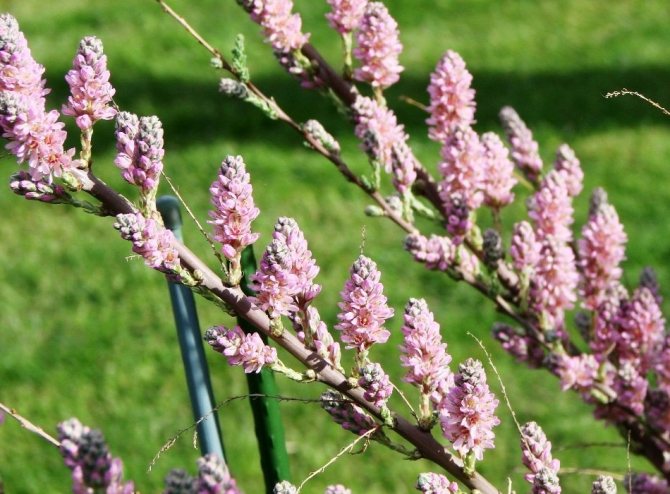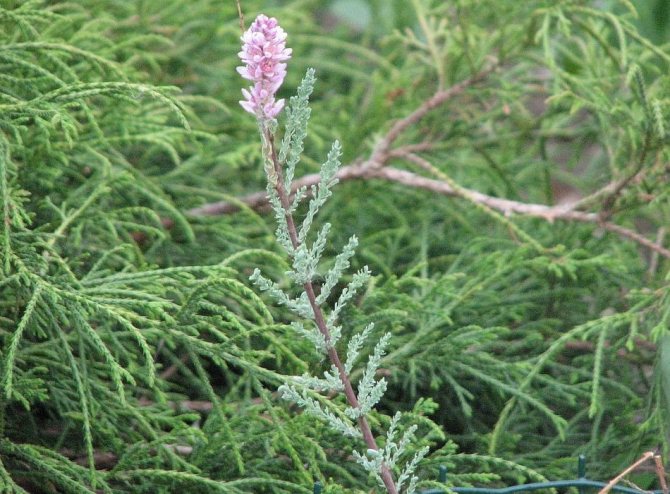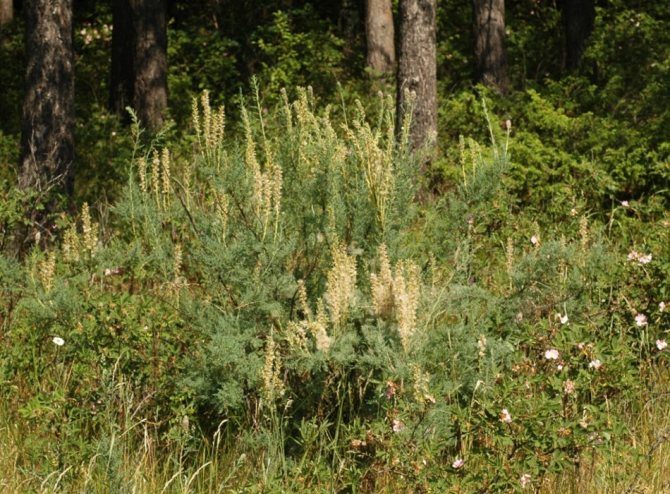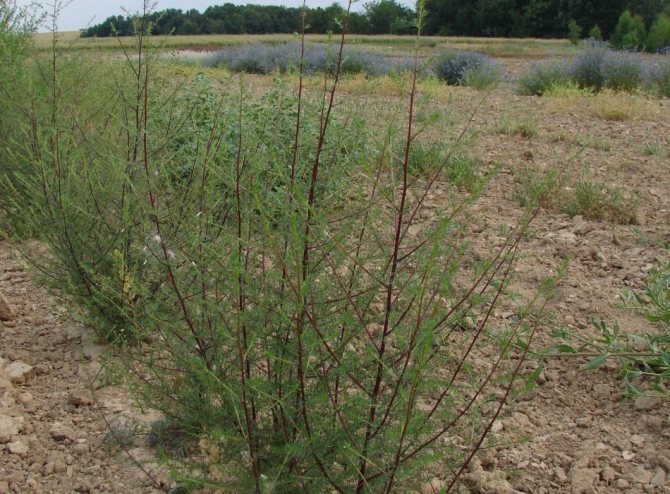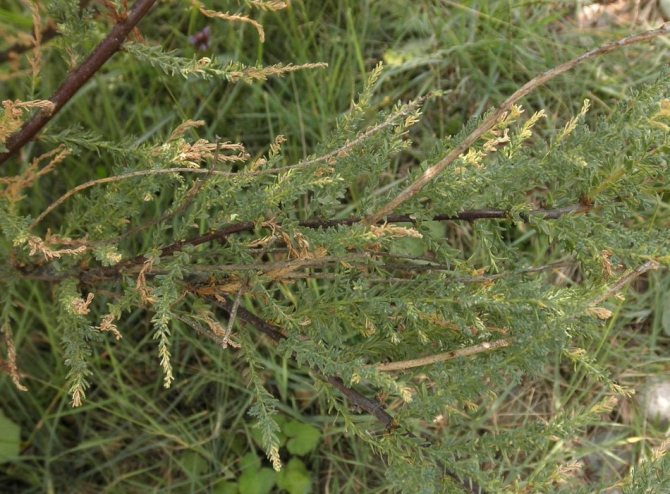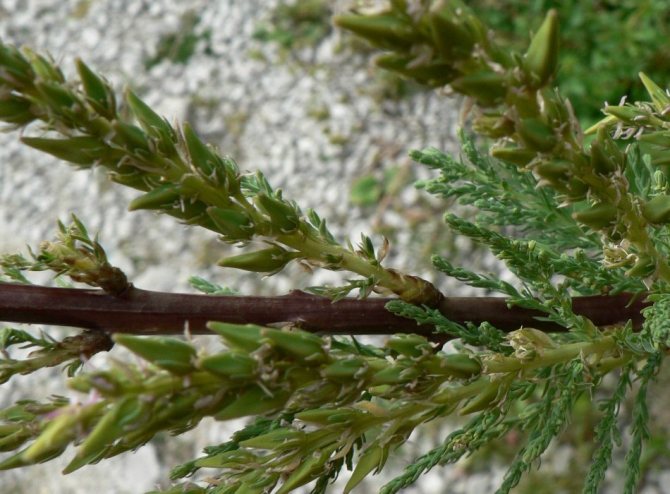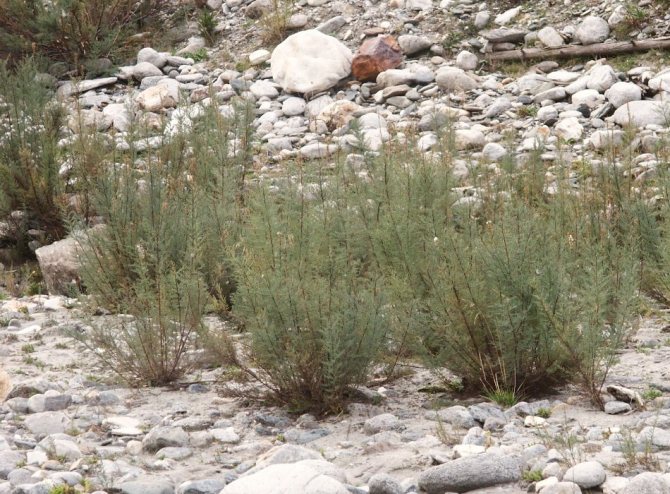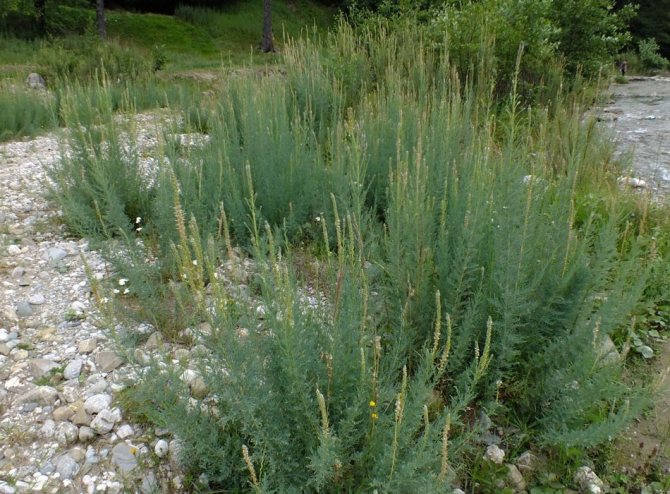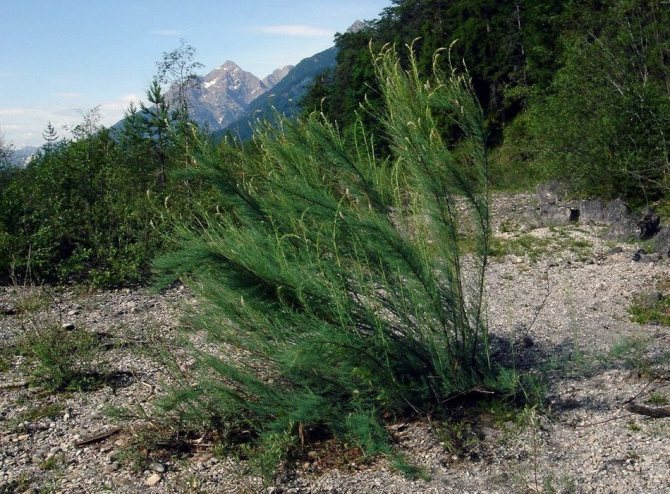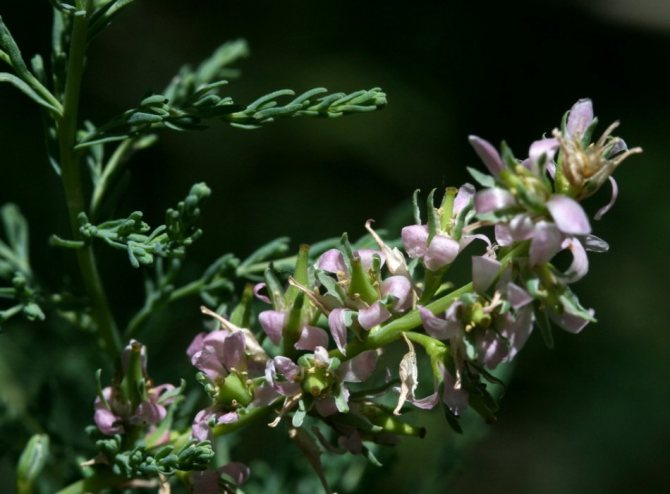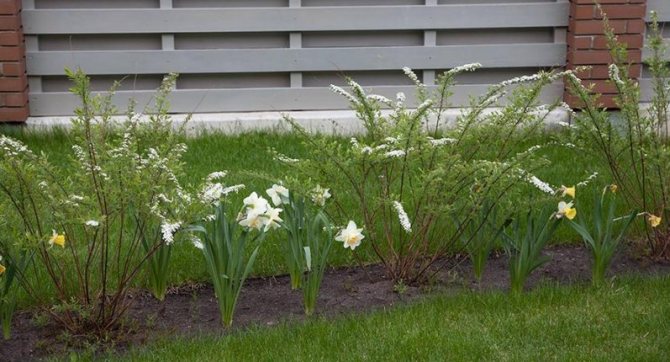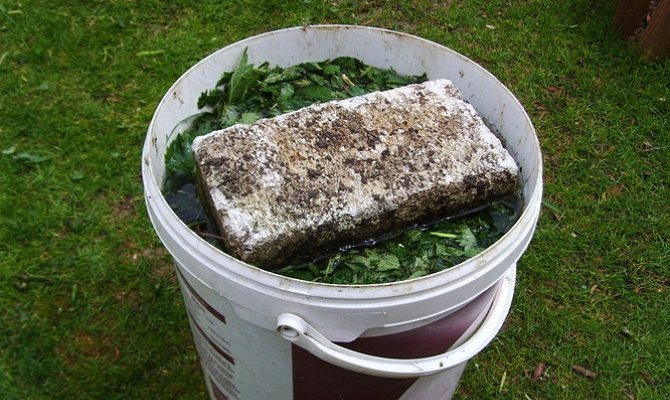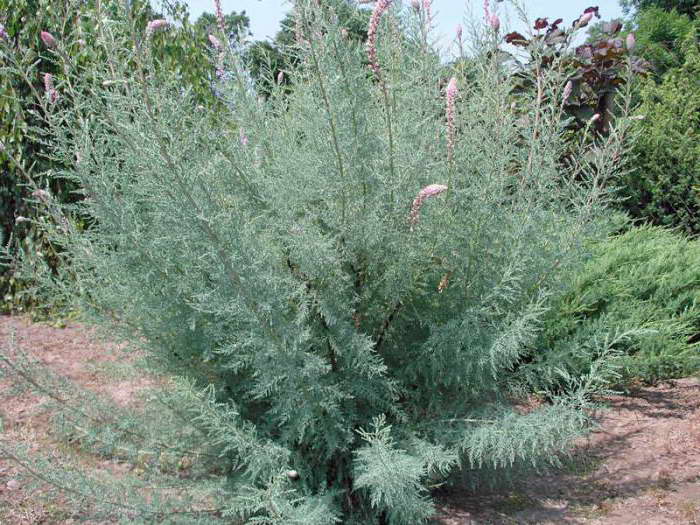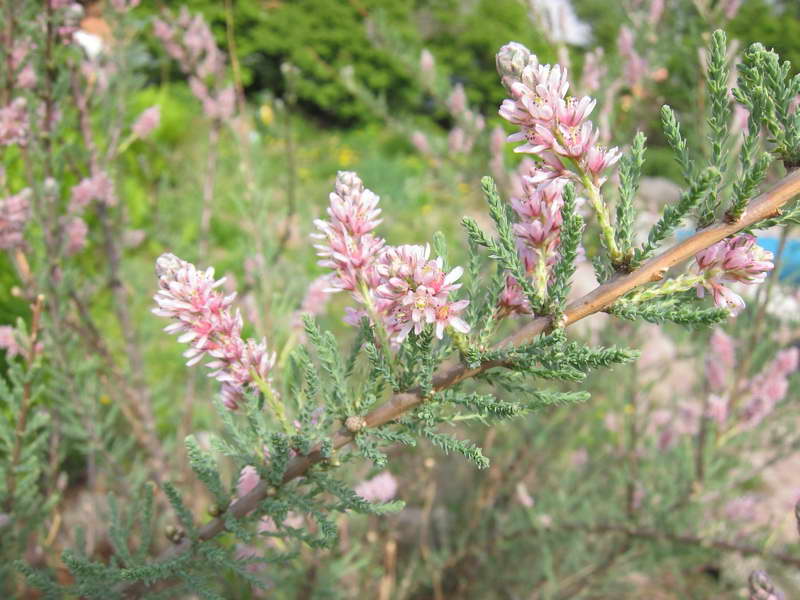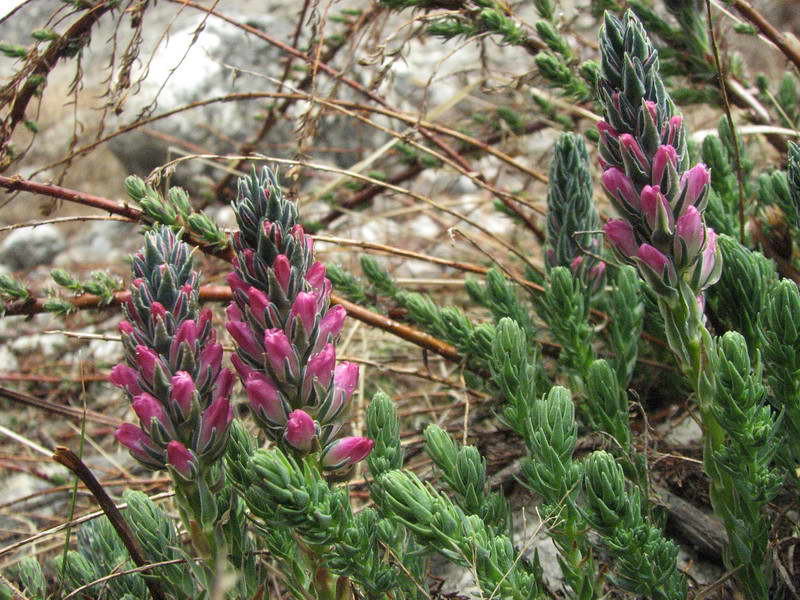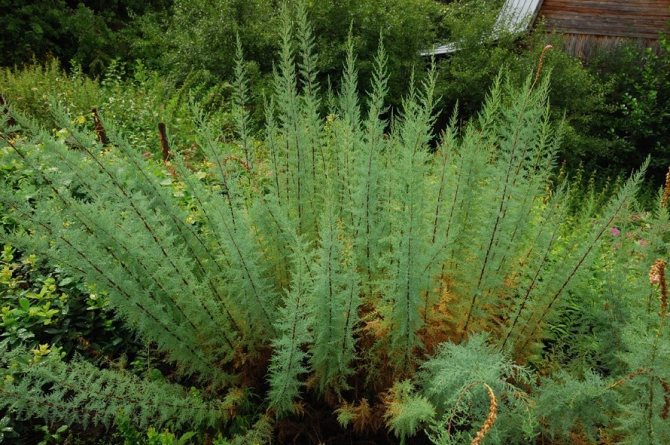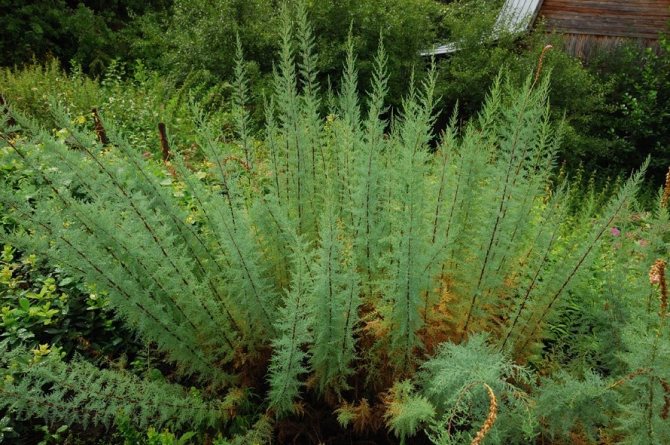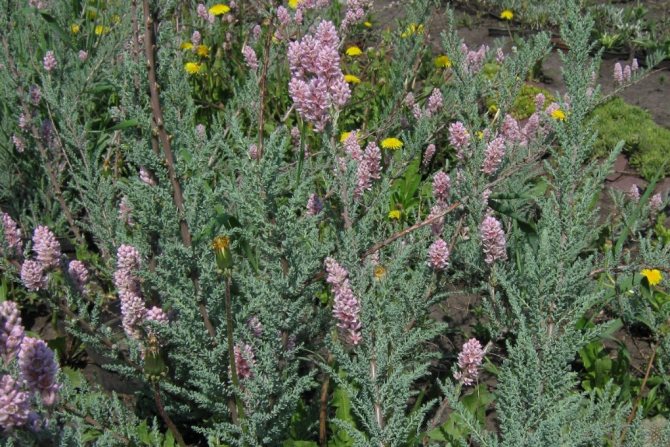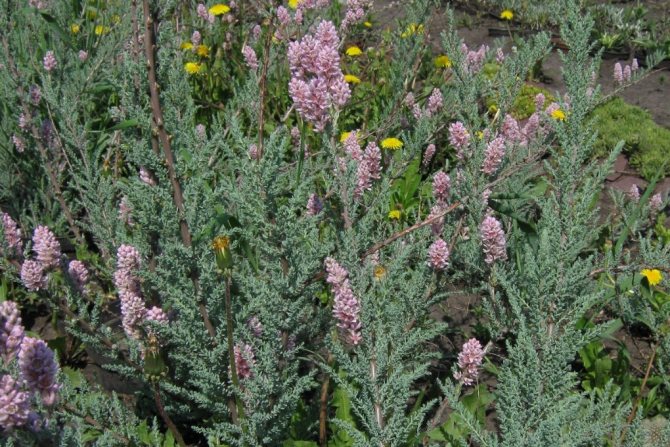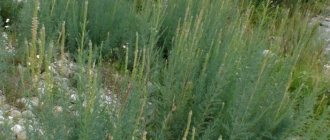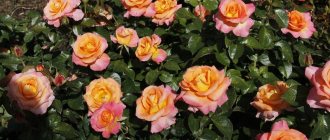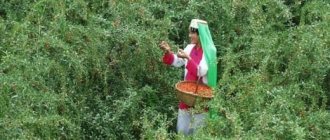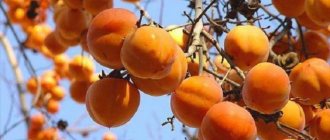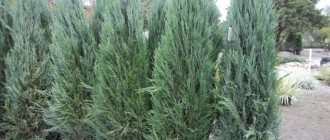Description of myrikaria
Mirikaria is a perennial that looks like heather and belongs to the Grebenshchikov family. Mirica is a word form of the Latin name for heather. The homeland of myrikariya is Asia, where it lives from Altai to Tibet, widely spreads on the Mongolian and Chinese plains. It grows on plateaus, uplands, climbs to a height of about 1.9 km above sea level.
The shrub has branched shoots of a reddish or yellow-brown hue with miniature scaly leaves. In a temperate climate, sprawling shrubs reach a height of 1-1.5 m, in their natural habitat there are giants up to 4 m.Garden representatives grow up to 1.5 m wide.
The bush consists of 10-20 ascending main shoots, they are smooth, woody. The lateral processes are covered with small fleshy leaves, painted in a bluish-green color. The growing season begins in May and lasts until the onset of frost. Even without inflorescences, the bush serves as an interesting decoration for gardens and front gardens.
When does myricaria bloom?
The flowering of marikaria begins in mid-May and lasts about two months. Delicate buds open gradually. First, they open on the lower shoots adjacent to the ground; by the end of summer, the tops are covered with flowers. Each flower lives for 3-5 days. A spike-shaped inflorescence appears on long, forty-centimeter peduncles. Small pink or purple flowers densely cover the brushes.
At the end of the flowering stage, seeds begin to ripen, collected in an elongated box in the shape of a pyramid. Small seeds are covered with whitish pubescence.
Varieties
In culture, two types of myrikaria are known:
- Daurian;
- foxtail.
She is long-leaved, often found in the south of Siberia and Altai. In the first year of life, young shoots are covered with a yellowish-green bark, which turns brown in subsequent years. The foliage is gray, narrow, reaching 5-10 mm in length, and only 1-3 mm in width. The shape of the leaves is oblong or ovoid, the upper part is dotted with small glands.
Inflorescences are formed on lateral (older) and apical (one-year) shoots. The shape of the inflorescences is simple or more complex, branched. At first, the peduncles are shortened, but become longer by the opening of the buds. On the bracts up to 6 mm in diameter, there is a miniature calyx, 3-4 mm in size. Pink oblong petals protrude 5-6 mm forward and are 2 mm wide. Half accrete stamens adorn the capitate stigma of the ovary. In a tricuspid elongated box, there are elongated seeds up to 1.2 mm in length with a partially pubescent awn.
Or, according to other gardeners, foxtail is more common in Western Europe, as well as in the Far East and Central Asia. Low shrubs with straight and ascending lateral shoots are strewn with successive fleshy leaf scales. The color of the leaf is silvery with a blue tint.
From mid-May to late August, the upper stems are decorated with clusters of pink inflorescences. Flowers densely cover the peduncle and begin to open from below, under the weight of the buds, the stem often descends in an arc. Until the opening of the buds, the peduncle is about 10 cm long and resembles a dense cone, but, as it blooms, it lengthens to 30-40 cm and becomes looser.
At the beginning of autumn, fruit ripening begins. Due to the whitish pubescence of the seeds at the ends of the branches, large shoots resemble the tail of a fox with a lush light end. For this feature, the plant got its name.
Growing myrikaria from seeds
Shrub propagates by cuttings and dividing the bush.
It is necessary to follow the rules for storing seeds so that they remain viable. Place them in an airtight, waterproof container, keep at moderate temperatures in a dry room. Planting is carried out the next year.
- Before planting, the seeds are stratified for a week: keep the seeds in a refrigerator with a temperature of 3-5 ° C. Stratification will ensure seed germination by more than 95%. Without this procedure, about a third of the seeds will sprout.
- Seeds are sown in boxes on top of the substrate, it is not necessary to deepen into the soil or sprinkle it with earth. Use the bottom method of moistening the soil through the sump. The seeds will hatch in a couple of days and small roots will appear.
- After about a week, an aerial shoot is formed.
- When the seedlings grow a little, they are planted in separate pots for growing.
- After the end of the frost, according to the established heat, plant the matured plants in the garden, but remember that even the slightest frost can destroy the seedlings.
How myrikaria foxtail is propagated
Propagated by seeds and cuttings - winter and summer.
Seminal
the method is laborious, since the seed is characterized by poor germination. The result can be obtained only if the rules for collection and storage are observed. Be sure to carry out stratification at a temperature of 3-5 degrees C for about 4 days. This procedure increases the germination rate up to 94%.
Cuttings
, harvested in early spring before the buds awaken, are planted in containers with soil composed of equal parts of sand, humus and peat. In the summer, when the plant blooms, cuttings are harvested from shoots located closer to the ground. They are rooted in a garden bed under cover of a glass jar, a bottle of transparent plastic or film. In good conditions, 100% of the cuttings take root.
Mirikaria is surprisingly resistant to disease, and pests bypass it. She is beautiful both in rockeries, and on the bank of an artificial pond, and as the center of the composition in a flower bed. Invite her to your garden and you will have something to surprise your guests.
Landscape design ideas: video
Propagation of myrikaria by cuttings
- For you can take both old woody shoots and young annuals.
- The length of the cutting should reach 25 cm, the thickness of the lignified stem should be about 1 cm.
- A freshly cut cutting should be immersed in an aqueous solution of a growth stimulator (Epin, Kornevin, etc.) for 1-3 hours.
- Treated cuttings are planted in pots with soil under cover from jars or plastic bags.
- The roots form quickly and the plant will soon be ready for planting in open ground, but in the first year of life, myrikaria is extremely sensitive to frost. For this reason, it is better to plant seedlings in open ground in the spring of the second year, without fear of subsequent wintering.
Reproduction by dividing the bush and layering
You can divide the bush in early spring, before the start of sap flow. Carefully dig in on one side and cut off part of the bush. Planted in the usual way, maintaining the planting level and straightening the roots.
To get a layering, bend a twig, pin it to the ground and sprinkle it with earth. Special care is not required: after a while, the branch will take root in the place of powder, and after two seasons the seedling can be separated from the mother bush and planted in a new place.
Landing features
An undemanding plant, myricaria can grow on almost any soil. But in order to help the bush take root faster and take root better, it is recommended to adhere to certain rules:
- The site must be sufficiently illuminated and protected from through winds.Better to give preference to open meadows. The culture will develop in partial shade, but then the duration of flowering will be reduced and the number of inflorescences will decrease, which will spoil the aesthetic appearance of myrikaria.
- For the effectiveness of budding, the soil under the bush must be fertile, drained, with a neutral or slightly acidic reaction. The moisture-loving plant prefers moist loamy soils. To prepare the soil mixture yourself, you need to mix light loam with peat in equal proportions.
- The optimal planting time is spring, before the beginning of the growing season, or autumn, after its completion.
Landing technology:
- You need to dig a hole 50 cm wide and the same depth.
- At the bottom of the hole, lay a drainage layer 20 cm thick made of brick fight, fine gravel, expanded clay.
- Sprinkle on top with fertile soil mixed with wood ash at the rate of 500 g per 10 kg of soil mixture.
- Place the seedling so that the root collar remains at ground level.
- Cover the young bush with earth, gently tamping it.
- Water the plant abundantly and mulch the soil with peat, sawdust. The layer thickness should not be less than 6 cm.
If a perennial transplant is required, it is recommended to do it up to 2 years of age, and it is advisable to transfer myrikaria to a new place with a large clod of earth, so as not to damage the root system and reduce the time for adaptation. The best period for this procedure is spring or autumn, when there are no leaves on the shoots.
Given that the bush is sprawling and tall, the plant should be planted at a distance of 1-1.5 m from any neighbors.
Plant care
The plant is resistant to pests and does not undergo various diseases. The care is not whimsical. Fortified plants easily tolerate summer heat up to + 40 ° С and severe frost of -40 ° С.
- Garden fertile, peaty loamy soils will be suitable, but it is best to choose neutral soils or with a slightly acidic reaction.
- On wet soil, it grows and blooms more abundantly, but even in drought and heat, marikaria will suffice with a little watering.
- In the absence of precipitation, you need to pour 10 liters of water only once every two weeks.
- Temporary flooding of the soil or excess moisture will also withstand.
To make the color of the bush itself brighter, annually mulch the soil with organic matter (humus or peat). It is recommended to fertilize twice a season using a universal fertilizer for heather crops.
It is better to plant the plant in shaded areas. Marikaria will normally tolerate bright lighting, but the rays of the midday sun threaten young shoots with burns.
Mirikaria in landscape design
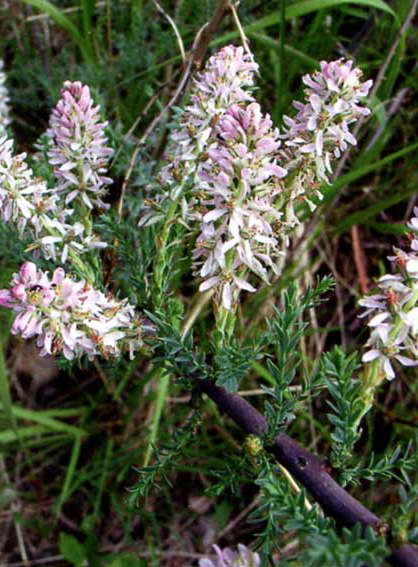
Mirikaria is perfect for decorating artificial and natural reservoirs. It is used solo or in planting in groups in flower beds. Preferred neighbors will be deciduous and coniferous dark green crops that look beautiful in rose gardens.
The plantings look original together with plants that have a purple color, for example, a. Ground covers with blue flowers are planted as the lower tier - perfect. Luxurious and Aurea with yellow leaves will perfectly complement the composition.
Using
Mirikaria will serve as a beautiful addition to the design of natural and artificial reservoirs. It is used as a tapeworm or in group plantings in flower beds. Preferably the neighborhood with deciduous and coniferous dark green crops, as well as in the rose garden.
Myrikaria foxtail is a rather large shrub, numbering about 10 species. Geographically located in Central Asia and Eastern Europe, the Himalayas and Mongolia, as well as Altai and Pamirs. It takes root easily in mountains and river valleys, on rocky and sandy lands. Lives both a wild-growing representative and a garden culture.
Description
Myrikaria foxtail - it is an upright shrub
... On average, it grows from the roots from 10 to 20 branches.
The uniqueness of this species is given by the leaves, which have an interesting scaly shape and color. Tightly sessile to the stem, openwork, bluish-green in color, give an exotic look to the plant.
In May on this bush
many bristles appear, similar to mauve spikelets. It blooms from bottom to top with small flowers that live from 3-5 days. This period is quite long and is up to two months. The stems do not grow stiff, and because of this, experts classify this species as semi-shrubs.
Varieties of myrikaria with photos and names
Myricaria dahurian long-leaved Myricaria longifolia
Distributed in the south of Siberia and Altai. Young shoots in the first year of life are covered with a yellowish-green bark, which turns brown over the years. The foliage is narrow, 5-10 mm long, 1-3 mm wide. The leaves are oblong or ovoid, painted in a gray color, the upper part of the foliage is covered with small glands.
Inflorescences are formed on the lateral (older) and apical (one-year-old) shoots. They are simple in form or more complex, branched. At first, the peduncles are shortened, but lengthen with the opening of the buds. The bract is up to 6 mm in diameter; it has a small cup up to 3-4 cm in diameter. Petals are pink, oblong, 5-6 mm long, about 2 mm wide. The capitate stigma of the ovary is decorated with half-fused stamens. The seed box is tricuspid, elongated, filled with elongated seeds up to 1.2 cm long with a slightly pubescent axis.
Myricaria foxtail or foxtail Myricaria alopecuroides
Most common in Western Europe, the Far East and Central Asia. The plant is a low shrub with straight and ascending lateral shoots, leaves are alternate, fleshy, scaly. The color of the foliage is silver with a blue tint.
From mid-May until the end of summer, brushes of pink inflorescences flaunt on the tops of the stems. Flowers begin to open from below, gradually covering the peduncle densely, which can lead to the bending of the stem in an arc. Before the opening of the buds, the length of the peduncle is up to 10 cm, and it looks like a dense cone, as it blooms, it lengthens up to 40 cm, becoming looser.
Fruit ripening begins in autumn. Due to the whitish pubescence of the seeds at the ends of the branches, the large shoot becomes like a fox's tail with a lush light tip. It was this feature that gave such a name.
Myricaria germanica
Blooms in June-July, very decorative thanks to its bluish branches, similar to spruce. It is widely used in folk medicine as a hemostatic agent, especially for gynecological diseases. Needs shelter for the winter at a young age.
Myricaria rosea Myricaria rosea
Herbaceous plant or shrub with small needle-like leaves and large pink inflorescences, somewhat massive compared to the twigs.
Mirikaria is the new name in the front garden
The vast majority of plants in the Russian flora have pure green leaves. But occasionally there are species with bluish, blue and gray shades in color. They are especially interesting for an ornamental garden, as they diversify its color scheme, contrastingly standing out against the general background. Designers are especially fond of these types, it is no coincidence that steel-gray wormwood and "lamb's ears", blue spruces and junipers, gray fescue and elimus were prescribed in the gardens. The plant that will be discussed below seems strange from all sides: the color and shape of the leaves, the unusual shape of the inflorescences, the nature of growth and the shape of the bush, and even by its very name - myrikaria.
The strangeness of myrikaria in its unusual appearance. It seems that this is not a flowering, but an exotic coniferous plant.But then it suddenly blooms, and again a surprise - the first individual flowers, gradually stretching out into long inflorescences, turn into fiery fox tails. Botanists called this shrub just that - myricaria alopecuroides.
In total, there are 10 types of myrikaria, 6 of them are found within the CIS, the rest in the regions of Asia adjacent to our borders. All of them are shrubs and semi-shrubs belonging to the Tamarix or comb family (Tamaricaceae). In Russian ornamental gardens, foxtail myrikaria is most often found, it is also German.
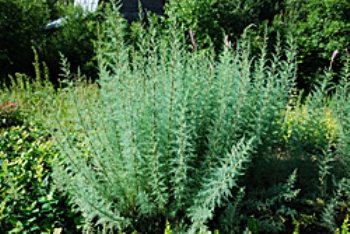

In nature, the range of this species extends in the south of Russia from the steppe belt of Siberia to the south of the European part, spreading further into Central Asia and Western Europe. In our conditions, myrikaria grows low, up to 1 m, spreading - up to 1.5 m, a bush consisting of 10-20 low-branched whip-like shoots emanating from the root. The leaves of myrikaria are very small, having the appearance of fleshy greenish-blue scales, densely clinging to the shoots. The color and texture of the leaves effectively highlight myrikaria against the background of ordinary greenery, making it attractive throughout the growing season - from early May to October. From mid-May, the additional decoration of the bushes is pinkish flowers that appear on the tops of the axial and then axillary shoots. The flowers are very small, but gradually growing and molding to each other, they gradually turn into dense spike-shaped inflorescences up to 40 cm long. The flowering of myrikaria lasts more than two months, sometimes capturing the beginning of August.
Mirikaria grows well and winters steadily in central Russia. A slight freezing of the ends of the branches is observed almost every year, but this does not in the least affect her appearance. It is noteworthy that the ends of the shoots of this species, even in nature, never become lignified, which is why scientists consider it a half-shrub. Mirikaria is light and moisture-loving, rather undemanding to soil fertility. At the same time, the most favorable places for it are places open to the sun with moist, well-drained fertile loams. If the soil substrate is specially prepared, it may be suitable, for example, a mixture of medium or light loam with peat in a 1: 1 ratio. The planting pit is dug about 50x50x50cm in size, and filled with the prepared substrate. It is also useful to add wood ash (about 300 g per place) or mineral NPK mixture (50-70 g) there. Plants tolerate a transplant with open roots only in a leafless state - in spring to early May, in autumn from mid to late October. With a lump of earth, and even more so in a container, the transplant is always successful.
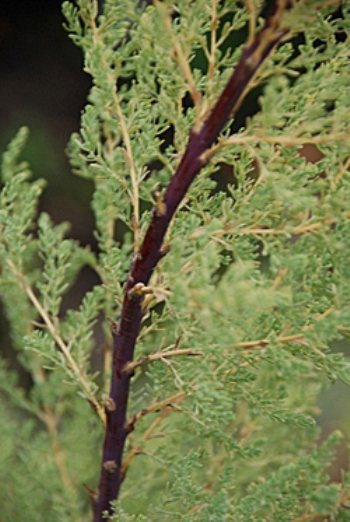

Proper care transforms the appearance of any plant and myrikaria - a vivid proof of this. It responds to fertilization and watering with active growth, fresh leaf color, and abundant flowering. The main fertilizer, in the form of humus or compost (approximately from a bucket to a bush), is shown to be applied in the spring until mid-May under a shallow embedment in the root zone. After half a month, it is good to mulch the foot of the bushes with a moisture-absorbing mulch containing humus: peat, crushed tree bark chips, loose humus, etc. The meaning of this action is to stabilize the moisture regime of the upper soil layer, at the same time it will attract earthworms and improve aeration. During the summer (in June-July) it is useful to make one or two liquid top dressing with mullein infusion (1:10) or fermented herb infusion prepared in the same proportion. Let me remind you that for this, two buckets of manure or four tightly filled buckets of grass are placed in a 200-liter barrel of water and insisted for two weeks. During this time, the nutrients pass into a state that is digestible for plants. The infusion is consumed in the amount of 2 liters per bush.
In dry periods, myrikaria should be watered with a frequency of once every 7-10 days, and between waterings, the near-stem circles are shallowly loosened, which also enhances nutrition, like watering itself.
Pruning of myrikaria is carried out at the beginning of leaf blooming, when winter lesions are more clearly visible. Frozen shoots are shortened to healthy wood or cut into a ring, guided, first of all, by considerations of decorativeness. At the same time, the branches that extend far beyond the crown are shortened.
The natural spreading of the crown does not always suit the face of myrikaria, and the compactness and density, on the contrary, simply transform it. This can be achieved by shaping and cutting. Mirikaria even tolerates significant pruning, but it is more expedient to form the bushes gradually, starting this process from a very young age. At first, only pinch the green ends of the shoots, limiting them to a length of about half a meter. This can be done almost the entire season, as they grow, but end from the beginning of September, giving the plants the opportunity to prepare for the cold weather. Step by step, the crown of the bushes will thicken more and more, acquiring the appearance of a dense hemisphere or a pillow of an attractive bluish-blue color.
The bushes formed in this way are very interesting in a single planting on a contrasting carpet background of purple tenacious, stonecrop, loosestrife "Aurea", Fortchun's euonymus, periwinkles, etc. A similar plot will look good in the entrance area of a country house, city cottage, in front of the office of a private company. By the way, the urban atmosphere of myrikaria does not harm at all. In landscaping, it can be planted as edging on large green islands of city auto-interchanges, with curbs along park alleys open to the sun. She matches the neighborhood of fairly large stones, tightly trimmed, she will not spoil with herself the compositions in the Japanese spirit.
Similar to an ephedra, "strange" myrikaria will organically weave into a coniferous garden, organized in contrasting combinations. If you need to decorate a small slope, then myrikariya, who loves moisture, it is better to take a place at its foot, planting a dense clump of several plants.
Smirnov Alexander Dmitrievich
Plants for the garden by mail: adonis, actinidia, barberries, hawthorns, blueberries, spruce, honeysuckle, cranberries, currants, hydrangeas, junipers, roses, spireas, tamariks, thuja, hosts, chubushniki and much more. Inexpensive, because we grow ourselves. Winter hardy and reliable, because it has been tested for many years. Experience of sending in Russia since 1995. Catalog in your envelope, on E-mail or on the website. 600028, Vladimir, 24 passage, 12, Smirnov Alexander Dmitrievich
Myricaria has scaly, small leaves, like heather.
The genus Mirikaria has about 10 species growing in Europe and Asia.
Mirikaria is a shrub with yellow or reddish-brown shoots and ordinary, scaly leaves that completely cover the shoots. The flowers of this shrub have a long bracts, the fruit is a box with seeds, equipped with hairy awns at the very top.
Mirikaria is a light-loving and moisture-loving shrub. Gives good growth from the stump. Tolerates haircuts well. The shrub is decorative with its extraordinary appearance during flowering and fruiting. For decorative purposes, it is used in single planting and hedges.
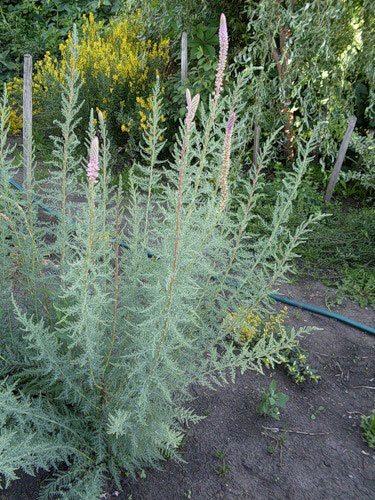

To summarize ...
- Myrikaria foxtail is a garden flower of the most unpretentious. It perfectly tolerates winter frosts, is not picky about the soil.
- This shrub can be planted in early spring or late autumn.
- Caring for a flower is watering, infrequent loosening of the soil (the roots of myrikaria must breathe), spring-summer dressing. Do not forget about pruning - without such a procedure, the bush will grow to the sides and will look sloppy.
- This plant propagates by seeds and cuttings (more common method).
And what does the main relative of myrikaria, tamarix, look like? You can get acquainted with this garden plant in this video:
Myricaria has scaly, small leaves, like heather.
The genus Mirikaria has about 10 species growing in Europe and Asia.
Mirikaria is a shrub with yellow or reddish-brown shoots and ordinary, scaly leaves that completely cover the shoots.The flowers of this shrub have a long bracts, the fruit is a box with seeds, equipped with hairy awns at the very top.
Mirikaria is a light-loving and moisture-loving shrub. Gives good growth from the stump. Tolerates haircuts well. The shrub is decorative with its extraordinary appearance during flowering and fruiting. For decorative purposes, it is used in single planting and hedges.
Types and varieties of myrikaria
Of the 10 types of myrikaria, only 2 species are found in landscaping: foxtail with an apical inflorescence and Daurian with inflorescences that are located on lateral branches. These 2 species lend themselves well to recovery after winter damage, and thanks to their sophisticated appearance during flowering, they revive the monotony of popular deciduous shrubs.
Mirikaria daurskaya
Distributed in Eastern Siberia and Mongolia, where it grows singly or in groups on pebbles along rivers and streams.
Shrub 2 m in height, on old shoots with brown-gray bark and yellow-green on young ones. The leaves of myrikaria dahurian are gray-green, sessile on primary branches, infrequent, oblong-ovate, and on secondary branches - linear-lanceolate. Flower brushes, both apical and lateral, simple or complex, 10 cm long, lengthen during the flowering period.
Bracts broadly ovate, with a slight acumen. Calyx 4 mm long, slightly shorter than petals, calyx lobes widened towards base; petals of myrikaria daira pink, oblong-oval 6 mm long. Fruits are narrow capsules. The seeds are small, with an awn half-covered with white long hairs. Myrikaria daurskaya blooms from June to August, at the same time the fruits ripen.
Photophilous and winter hardy
... Propagated by cuttings, seeds and shoots from the stump. Mirikaria daurskaya is decorative thanks to its beautiful crown and green coloring of scale-like leaves. Recommended for hedges, as it tolerates a haircut perfectly.
Myrikaria foxtail
Under natural conditions, it grows in Western Europe, Siberia, Central and Central Asia, and the Middle East.
Myrikaria foxtail is a shrub with graceful, spreading shoots, covered entirely with alternate, fleshy, gray-green leaves. From May to September with small, numerous, pink flowers, collected in dense, almost spike-shaped, drooping inflorescences.
Flowers begin to bloom from the bottom of the inflorescence, gradually moving to the top. During flowering, the inflorescences of myrikaria foxtail lengthen 5 times, reaching half a meter. The fruits ripen at different times.
Myricaria multiplies
foxtail cuttings, seeds, shoots from the stump. Photophilous, resistant to pests. Grows well in well-drained, fertile areas.
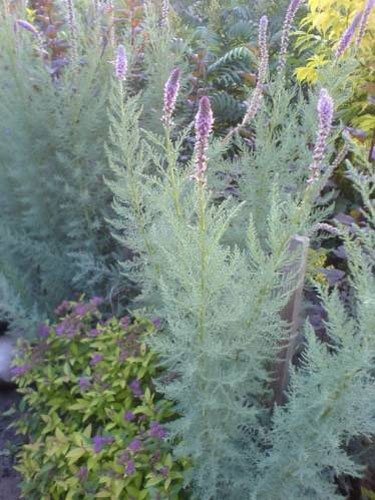

Tolerates haircuts well. Beautiful during the growing season. In the spring, it is recommended to feed it with a complex mineral fertilizer. Myrikaria foxtail can freeze to the level of snow cover and grows back over the season.
For the winter, you need to tie the shoots and tilt them to the ground. The shrub is suitable for planting in flower beds with tall perennial plants and near a reservoir.
Fruits, vegetables, berries on the site are just wonderful, all their own and tasty. But I want to please the eye with an elegant and blooming flower bed. In recent years, the selection of various decorative flowering crops in specialized stores is huge, which is not there! And I want to buy something interesting and unusual for the site. I recommend that you purchase myrikaria. It compares favorably with other plants with silvery-gray leaves, blooms for 2-3 months, and the flowers exude a pleasant aroma.
A little about myrikaria
Mirikaria is a shrub with small, scaly leaves with reddish-brown or yellow-brown shoots. This perennial plant came to us from Asia.Almost the entire space from Altai to Tibet is considered its homeland, but it is especially often found on the Mongolian and Chinese plains. For landscaping areas, 2 types of myrikaria are most often used (in total, there are about a dozen of them):
Daurskaya
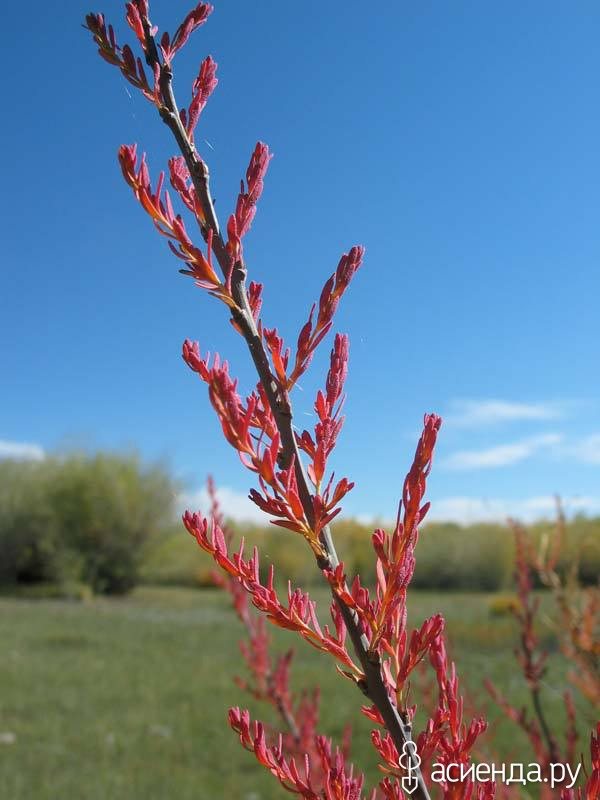

Foxtail (foxtail)
Their main difference lies in the arrangement of the peduncles: in the foxtail inflorescences they are located at the top of the branches, and in the Daurian inflorescences on the lateral branches. Mirikaria is very fond of light and wet areas, which will need to be considered when choosing a place to plant it. It tolerates pruning well, easily and quickly recovers after harsh winters, even if it had to be "cut" completely, leaving only a stump. The flowering of myrikaria begins around mid-May and lasts for 2-3 months, the flowers do not open all at once, but in turn, flowering begins from the lower branches and gradually moves to the upper branches.
Planting and caring for myricaria
Mirikaria is perhaps the best plant for those who do not like to take care of plants, but at the same time want their site to please the eye with beauty. This plant is extremely unpretentious, it is not susceptible to various diseases, and garden pests do not like it. In addition, it easily tolerates heat, even at a temperature of 40 degrees Celsius, it grows calmly, and cold, without freezing to the ground. To plant this ornamental shrub, you need to choose a bright place, but if possible shaded, with slightly acidic or neutral soil, preferably a peat substrate, but at the same time it grows well on fertile garden soil or on loamy soil. Mirikaria is very fond of moisture, but easily withstands drought, requiring only poor watering - about 10 liters per 1 bush for 10-14 days. But if the soil moisture is regular and sufficient, then the shrub will grow faster and bloom more actively. During the spring-summer period, it is necessary to feed 1-2 times with special fertilizers for heather plants. In addition, annually in the spring, it is advisable to mulch with humus or peat, then the shrub will delight you with a more saturated color of leaves and flowers.
Pruning
Mirikaria needs constant pruning. If you do not carry out this simple procedure, then over time, after 7-9 years, the shrubs will simply become stiff and lose their beauty and originality. Therefore, do not neglect this operation. You need to prune 2 times a year: in spring and autumn. Spring pruning will help get rid of frozen and dead twigs, and autumn pruning will help form a shrub of the desired shape.
Myrikaria foxtail: features of care
This shrub will be the best choice for those who do not like or do not have the opportunity to care for the plants, but want the area to be beautiful. Mirikaria is very resistant to diseases and pests, so the process of caring for it is not difficult. Did you know?
Not all conifers have scale-like or narrow-linear leaves, but only those living in temperate latitudes of the earth. In conifers, which were formed in a subtropical or tropical climate, the leaves are lanceolate.
Watering
To ensure abundant flowering of the shrub, it is necessary water regularly
... If there is no rain at all, then this should be done once every two weeks, using 10 liters of water per plant. Watering frequency depends entirely on weather conditions and the level of soil drying.
Loosening and mulching the soil
To ensure the rich color of the leaves, you need to mulch the shrub every spring. This requires the use of organic fertilizers such as peat, humus and mineral fertilizers.
And also in the summer, you can feed the bush with liquid fertilizers about two times, for example, mullein infusion or fermented herbaceous infusion. With strong compaction of the soil around the bush, it must be shallowly loosened.
A haircut
Fox-tailed myrikaria needs cropping
... If you do not carry out this procedure, after 7-8 years the shrub will stiffen and lose its beautiful appearance.
Myricaria foxtail will look very beautiful against the background of "carpet" flowers: begonia, alyssum, windweed, pinnate carnation, coleus, lobelia, stonecrop, periwinkle, loosestrife, euonymus, phlox.
You need to prune the plant twice a year. Spring trimming involves pruning frozen and dead twigs, and in the fall, the plant is given a decorative shape.
Wintering
Although this ornamental shrub is winter-hardy, you still need to prepare it for the cold weather. The branches can break from the weight of the snow, so they need to be tied. If the plant is still young, then it is bent to the ground.

